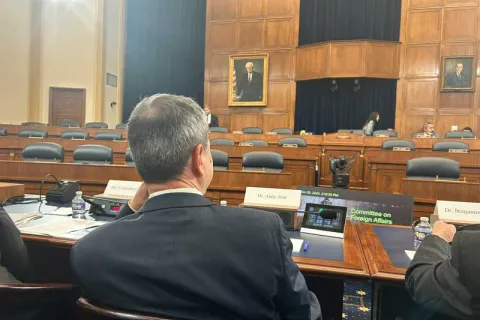Promising treatment programs highlighted at Thought Leadership Summit on Challenging Behaviors
December 15, 2020As experts and the autism community gathered virtually for the second day of the Autism Speaks Thought Leadership Summit on Challenging Behaviors on Dec. 4, discussions explored a broad range of programs and solutions that address severe, moderate-intensity and newly emerging behavior challenges.
“The range of behavior support needs in children and adults with autism is as wide as the spectrum itself,” said Donna Murray, Ph.D., vice president and head of clinical programs at Autism Speaks. “In addition to the immediate safety needs for someone who is aggressive or injuring themselves, we also know that intervening early when new behaviors emerge - at any age - can help prevent behavior from escalating to that level of intensity.”
One program that has been shown to be significantly effective when behaviors are milder or just emerging is called RUBI, or Research Units in Behavioral Intervention. At autism centers at Nationwide Children’s Hospital in Columbus, Ohio, and at Seattle Children’s Hospital, this program is a parent and caregiver training that gives them tools to effectively respond to their child’s behavior.
“RUBI builds the family’s skills as well as their confidence to manage behavior,” said Amy Hess, site coordinator for the Autism Treatment Network at Nationwide Children’s Hospital in Columbus, Ohio.
Another model showing promise in Iowa uses telehealth to coach parents in teaching functional communication. The model was as effective for reducing disruptive behaviors as in-home visits or clinic appointments on the same once-per-week schedule.
“These cost reductions mean that more families can be seen within a day or week, which allows for getting the services to the families and children who need and want it,” said Kelly Schieltz, Ph.D., BCBA-D, who researched the effectiveness of the program across all three delivery methods.
While telehealth can’t replace all access problems or work for every child, the model allowed the program to improve access to needed services without sacrificing effectiveness and at a reduced cost to the family and providers.
“Telehealth is another tool in our toolbox,” said Dr. Schieltz, who suggested providers and clinics could incrementally adopt telehealth for certain parts of the service experience, such as patient intake, or based on family preference.
Access to services is a barrier for many families, as quality behavior support programs are often not available locally.
In parent Kelly Smith’s case, treatment options were out of reach for her just across state lines in neighboring Maryland from her home in Washington, D.C., for programs for her 14-year-old son who needed them and for whom in-home supports have not been successful.
In all the models discussed, early identification and intervention for behavior concerns is emphasized as a key way to prevent the need for crisis care and emergency department visits, where most health care staff are not trained to manage these behaviors while providing medical care.








